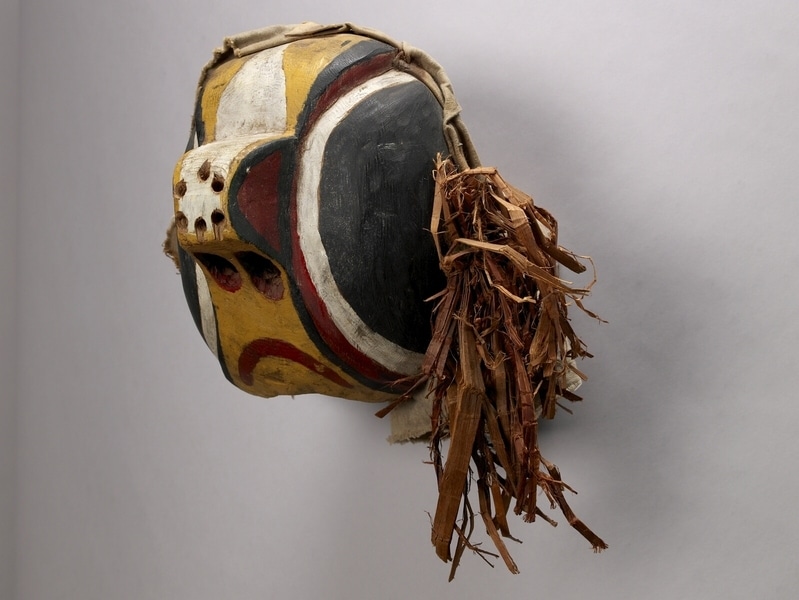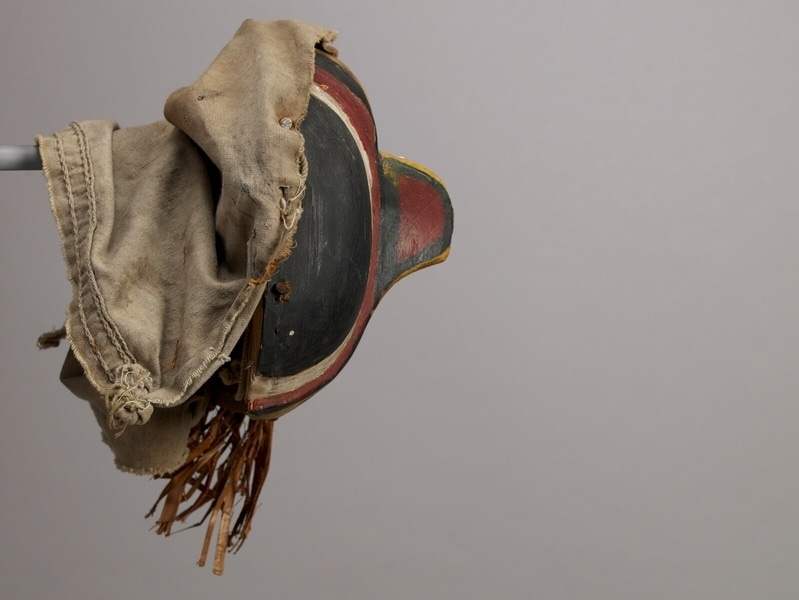Mask Item Number: A8240 from the MOA: University of British Columbia




Description
Mask with large bulbous eyes, squared nose with holes around it, a painted mouth, and cedar bark fringe. Linear designs on face are in black, yellow, red, and white. Cloth is attached to the back of the mask and hangs down. Is secured with fibre cording and nails.
History Of Use
Used in the Bumblebee dance, which is a children's dance and is often one of the first dances a child participates in during the Winter Ceremonial among the Musgamagw Dzawada'enuxw.
Narrative
Used in potlatch by Alec Nelson, Kingcome Inlet, 1938 (D. Hawkins, 1966).
Iconographic Meaning
Represents a bumblebee. In the dance, a father and mother bee lead progressively smaller bees out onto the dance floor one by one. When the children are led back into their 'beehive' at the end of the dance one child is discovered to be missing. The father bee circles the floor four times searching for this lost child. On the fourth round the child is found hidden amongst the spectators and is led home.
Item History
- Made by Dick Hawkins (Maker) and Samuel Hawkins (Technician) in British Columbia, Canada during 1938
- Collected in Kingcome Inlet, British Columbia, Canada and Ukwanalis, British Columbia, Canada during 1962
- Owned by Charlie Willie
- Owned by Canadian Cabin Crafts before November 1962
- Received from Canadian Cabin Crafts (Seller) and H. R. MacMillan (Funding source) during November 1962
What
Who
- Culture
- Kwakwaka'wakw
- Creator
- Dick Hawkins (Maker) and Samuel Hawkins (Technician)
- Previous Owner
- Charlie Willie and Canadian Cabin Crafts
- Received from
- Canadian Cabin Crafts (Seller) and H. R. MacMillan (Funding source)
Where
- Holding Institution
- MOA: University of British Columbia
- Made in
- British Columbia, Canada
- Collected in
- Kingcome Inlet, British Columbia, Canada and Ukwanalis, British Columbia, Canada
When
- Creation Date
- during 1938
- Collection Date
- during 1962
- Ownership Date
- before November 1962
- Acquisition Date
- during November 1962
Other
- Condition
- fair
- Current Location
- Case 36
- Accession Number
- 0087/0004